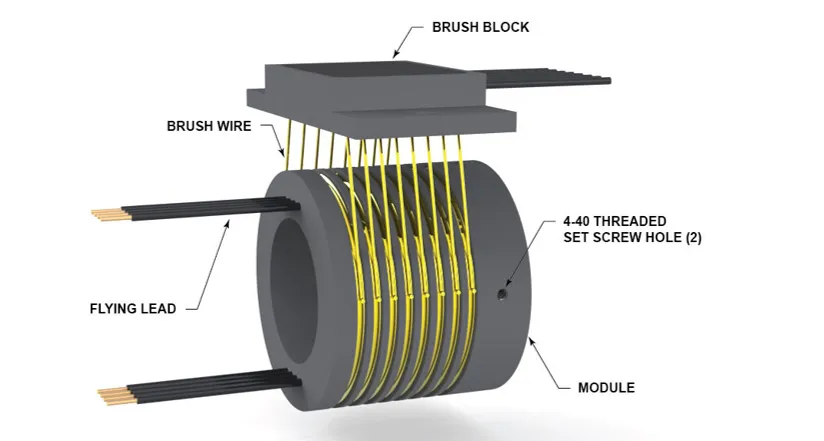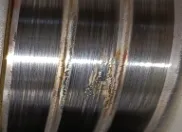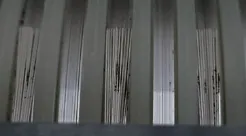Maintenance Best Practices for Through Bore Slip Rings – Extend Service Life
BY NBG
 2025-10-07
2025-10-07
VIEWS: 265

Maintenance Best Practices for Through Bore Slip Rings
Most rotating machines have slip rings for uninterrupted transmission of data, signals, or power. Through-bore slip rings have a central space that allows shafts to pass through.

It is therefore crucial to understand how to maintain a slip ring to avoid common failures and long-term damage. In this guide, we explore why and how to carry out maintenance of slip rings.
Why Maintenance Matters?
Regular through-bore slip ring maintenance prevents system breakdown due to wear and tear.In addition to micro slip rings, for medium and large slip rings, such as through-hole slip rings, wind power slip rings, etc., In order to ensure the quality of current transmission, the carbon brush will apply a certain pressure relative to the slide. Under this pressure, the relative friction between the carbon brush and the slide will cause wear, which will lead to the generation of wear debris. If not maintained regularly, it will cause the accumulation of wear debris to a certain extent, which will later cause ignition.


Additionally, standard slip ring products typically do not account for special environmental conditions. However, in certain extreme operating scenarios—for example, when nearby equipment generates high voltage (usually requiring tens of thousands of volts) that ionizes oxygen molecules (O₂) into oxygen atoms (O), some of which then combine with oxygen molecules to form ozone (O₃)—the ozone can degrade conventional elastomer sealing rings. This degradation compromises the slip ring's IP rating. Therefore, inspecting and replacing the sealing rings during maintenance can significantly extend the slip ring's service life.
Through Bore Slip Ring Maintenance Best Practices
Minimal downtime and consistent performance are the results of regularly maintaining the through-bore slip rings. Additionally, it's one of the many ways to extend the slip ring's lifespan.
1. Schedule Regular Inspections
Maintaining a consistent inspection schedule enables you to identify potential issues promptly.
Keep a record of every inspection you conduct, noting all issues for future reference.
2. Perform Visual and Mechanical Checks
When the machine is not in operation, check for dust and debris accumulation. A dusty or contaminated slip ring can no longer maintain a steady sliding connection with the brush.
Check if the other components surrounding the slip ring have also accumulated any dust or debris. Carefully inspect the slip ring's surfaceand other potential issues. Ensure the slip ring aligns with the shaft to prevent uneven rotation.
3. Different Cleaning Methods for Slip Rings with Various Technical Solutions
3.1 Copper Brush + Copper Slip Ring or Silver Brush + Silver-Plated Copper Ring Slip Rings
Maintenance Interval: Every 6 months or 5 million rotations.
Cleaning Procedure: Open the housing.
Carefully remove internal dust using compressed air blowing or Handheld air blower.
Reassemble the housing.
3.2 Gold-Gold Contact Slip Rings
Maintenance Interval: Every 6 months.
Cleaning Procedure: Apply a specialized cleaning spray directly onto the slip track and brush wires.
Follow the maintenance manual to apply lubricating oil to the slip track surface.
3.3 Silver-Silver Contact Slip Rings
Maintenance Interval: Every 2 years.
Cleaning Procedure: Open the housing.
Remove internal dust using compressed air blowing or Handheld air blower.
Reassemble the housing.
Key Benefits of Regular Cleaning
Extends slip ring lifespan by preventing dust buildup.
Reduces signal packet loss and ensures stable data transmission.
Prevents arcing during power transmission, maintaining optimal performance.
4. Lubrication
Due to the continuous friction between the brushes and slip tracks, lubrication is essential in many applications—particularly those requiring extended operational lifespans—and is typically performed after cleaning the slip ring. However, some slip rings feature self-lubricating capabilities and may not require additional measures.
For slip rings without self-lubrication, ensure the following steps are taken periodically: Remove wear debris and clean the slip ring thoroughly.
Apply an appropriate lubricant (via spraying or dripping) to the slip track.
Rotate the rotor to distribute the lubricant evenly across the slip track
5. Keep Logs and Monitor Trends
As you conduct regular inspections, keep a detailed log to monitor performance easily. Use the records to identify patterns, such as increased resistance or fast-wearing brushes. The records make it easier to identify any underlying issues that require more detailed checking.
Logs can also help technicians identify any past issues, making repairs easier.
6. Special Maintenance for Harsh Environments
Invest in a high-quality protective cover to prevent slip ring exposure to harsh environments such as moisture or chemicals.
Alternatively, you can opt for a slip ring with advanced environmental protection features. Slip rings in military or aerospace applications can withstand humidity and extreme temperatures.
Common Problems and Troubleshooting Techniques
If you want to learn more about the common issues, check out the manufacturer’s slip ring troubleshooting guide. However, for more serious problems, we recommend contacting a professional technician. Common issues to look out for include:
Intermittent Connectivity
In some instances, as the slip ring rotates, random power disruptions or unstable signals occur, resulting in intermittent connectivity issues. Loose wiring and uneven ring surfaces are the common causes.
Visual inspections for dust and contaminants on the slip ring surface are one way of identifying the problem. Use a multimeter to check for a faulty surface or an oscilloscope to detect signal-related issues.
Noise in Signal Transmission
Unfortunately, noise is a common problem, particularly in through-bore slip rings that handle sensitive data or low-voltage signals. Causes of the noise can be either.
● Dirty or worn-out bore slip rings.
● Poor brush-to-ring contact.
● Grounding issues.
Replacing worn-out parts, cleaning, and routine signal testing can help you solve the problem.
Physical Wear or Noise
Squeaking or vibration noises indicate that scoring or deep grooves are present on the slip rings. Misalignment between the slip ring and other components is a primary cause of the physical wear and noise.
The only way to correct the noise is by either aligning or replacing the entire slip ring if it is worn out.
Overheating
Through-bore slip ring deformation or discoloration is a sign of overheating. Confirm if the current load is too high.
If you’re using a system that operates at continuous high speed, ensure the ventilation is adequate. Frequent hollow shaft slip ring care prevents overheating resulting in safe operations.
Conclusion
Regular inspections, cleaning, and lubricating are some of the tasks necessary when carrying out maintenance of slip rings. Whether in constant use or not, slip rings can accumulate dust and contaminants, corrode, and overheat.
Carrying out regular maintenance makes it easier to identify and resolve issues before significant damage occurs.








